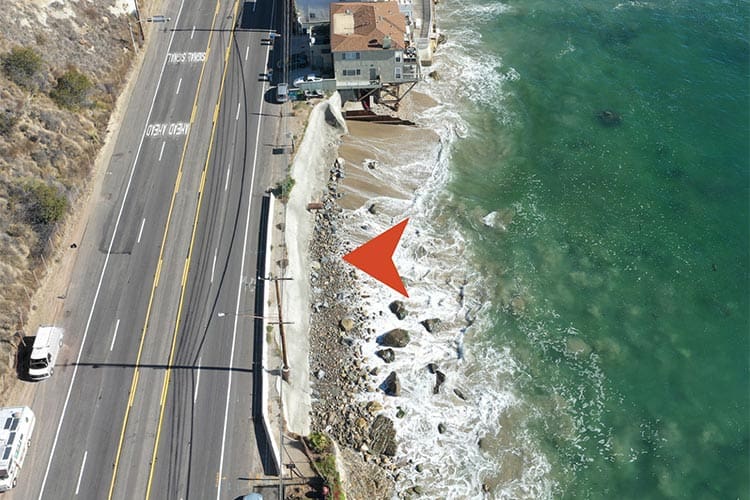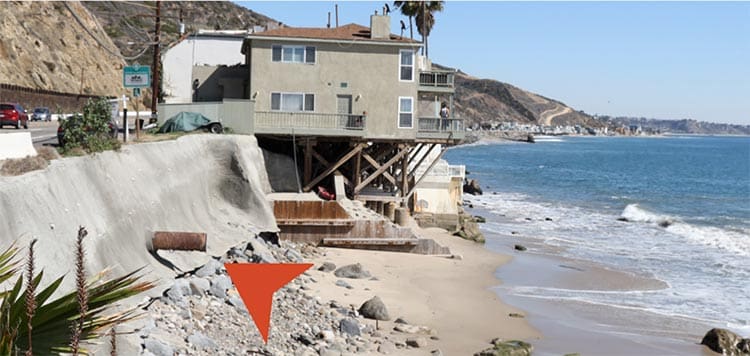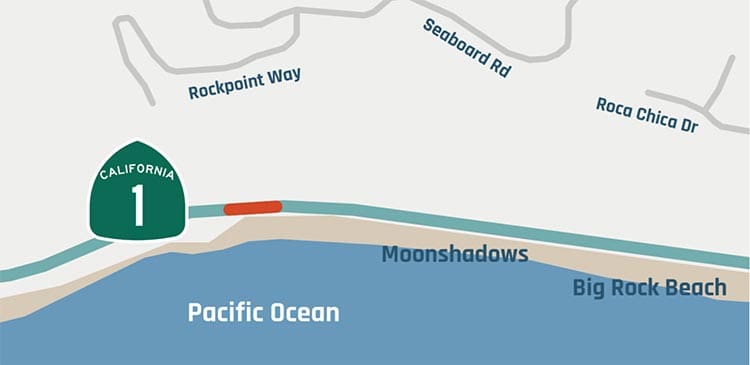SR-1 SLOPE RESTORATION PROJECT
CALTRANS IS PLANNING A PERMANENT SLOPE RESTORATION ON STATE ROUTE 1 (PACIFIC COAST HIGHWAY) IN MALIBU.
Jim Medina, Public Information Officer of Caltrans – District 7 has shared information for the cycling community regarding an upcoming project that will affect a small segment of Pacific Coast Highway / State Route 1 in Malibu. There will be work, which is necessary due to erosion that is damaging the southbound shoulder/right lane of the highway. Bicyclists will be able to share the right highway lanes in the 180-foot section.
Construction of the $12.4 million project north of Big Rock Drive is scheduled from September 2022 through July 2023. Utility relocation will take place from September 2021 through October 2022.
The work zone spans 180 feet on southbound SR-1, which will require shifting lanes toward the hillside to make room for special construction equipment.
Background
Storm damage during the winter of 2015-2016 caused slide damage along this slope, endangering the shoulder and the right southbound lane. Caltrans assessed the risk to the stability of the roadway and issued a Director’s Order on June 10, 2016, for an emergency project to apply short-term protective measures to the collapsing slope and shoulder. The project installed a “shotcrete” wall as a temporary fix, but it is now being undermined by sea waves, endangering the southbound shoulder and southbound right lane.
Urgency
The 180-foot beach area is prone to erosion and needs slope protection Permanent slope restoration must be completed as rapidly as possible
to prevent erosion, flooding and enlargement of sinkholes that may trigger long-term closures of State Route 1 (Pacific Coast Highway/ PCH), an essential route for residents, commuters, emergency services and commercial traffic.
Benefits
A secant pile wall will permanently restore the slope, 600 linear feet of widened shoulders, and 178 linear feet of concrete barrier. The new wall also will dissipate the energy generated by the waves.
Project
Cast in Drilled Holes (CIDH) are high capacity cast-in-place deep foundation elements constructed using an auger to drill a hole, in which steel reinforcement and concrete are placed. Secant pile walls consist of overlapping CIDH piles, creating a water-tight surface.
Two types of piles are used in secant pile wall construction, a “primary” reinforced pile, and a “secondary” or unreinforced pile. Primary and secondary piles alternate, to create a wall of piles.
There will be no pedestrian access in the construction area. Bicyclists will be allowed to share the right highway lanes.
What to Expect
To provide space for construction along the 180-foot stretch of shoulder and roadway, traffic lanes will be shifted toward the hill, with the 10-foot-wide median reduced to 2 feet. There will be three 10-foot-wide lanes and one 11-foot-wide lane during construction, with no shoulder in both directions. The speed limit in the work zone will be reduced to 25 MPH.
General Work Hours
Monday-Friday 6:00 a.m. to 9:00 p.m. Weekend work is permitted..
PROJECT WEBSITE
https://dot.ca.gov/caltrans-near-me/district-7
No products found.



















